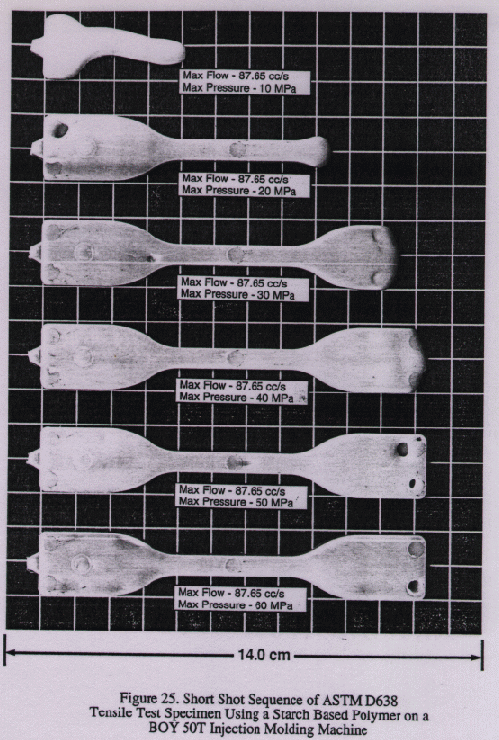One of the basic rules of scientific injection molding is among the most frequently broken: aim for 95% to 99% filled parts at transfer. The cause may simply be misunderstanding what this means, and often times when troubleshooting a process, I have found that this basic parameter was missed in the job setup.
July 11, 2012
One of the basic rules of scientific injection molding is among the most frequently broken: aim for 95% to 99% filled parts at transfer. The cause may simply be misunderstanding what this means, and often times when troubleshooting a process, I have found that this basic parameter was missed in the job setup.
The key is truly knowing the difference between filled and packed. If you are setting your jobs up to be 95% to 99% packed, you are more than likely filling way too far, and, possibly unintentionally, completely filling the parts on first stage. This rule should not be based on a percentage of fully packed parts, so don't use 95% to 99% of what a full shot weighs when trying to establish the transfer position.
short shots
The processor must ensure that the parts are visually short in first stage. We are looking for 95% to 99% filled parts, not packed parts. Filling the mold on first stage is just asking for trouble and you are likely over-packing the mold if you do so. We want to switch from V-P before we smash the flow front into the end of fill. If not, this can result in the cavity steel seeing extremely high pressures at high velocities, and that can result in a flashed mold or, worse yet, a broken one.
Choose fill time, adjust your transfer
During process development, after you have chosen your fill time, adjust the transfer position until the parts are between 95% and 99% full at the desired fill time. Remember, you may have to make adjustments to your fill speed to ensure you maintain the correct fill time. Collect three to four shots at 95% to 99% full and weigh each shot individually, calculating the average.
Now you have a target to hit when reproducing your developed process. In future runs, as long as you match the fill time and the transfer weight you have just established, you will be able to replicate the exact transfer position. This can also be done using cavity pressure transducers. The transducers must be properly placed in the cavity to control V-P transfer, and in some cases, it is necessary to have two transducers in each cavity to control V-P and monitor the quality of the parts.
If you have a properly instrumented mold, finding the transfer position is done by ensuring that your parts are 95% to 99% full at your chosen fill time. Instead of weighing the shots, record the post-gate cavity pressure at the desired fill percentage. You should identify the post gate cavity pressure at the point that parts just begin to completely fill. Knowing this number will give you a reference of how far is too far when filling. Once you have established your post-gate cavity pressure at the desired fill time and fill percentage, the machine can be set to transfer on cavity pressure.
Build in short shot capability to tools
These tasks are extremely difficult if you cannot run a short shot on a particular mold. This is important to remember while in a design review and should be discussed at that time. Make sure you ask the tool maker if the proposed design can eject short parts. If the answer is no, your team must find a way to make it happen. Producing short shots for process development is a fundamental part of establishing a robust, repeatable process.
About the Author: Robert P. Gattshall� has worked 17 years in the automotive and medical injection molding industries, including 12 years in process engineering and process development. Certified in John Bozzelli's Scientific Injection Molding for more than 10 years, Gattshall has developed more than 600 processes using scientific injection molding principles. Certified in Lean 5S and SMED, Gattshall has also trained more than 50 process technicians and engineers on the principles of decoupled molding.
About the Author(s)
You May Also Like


